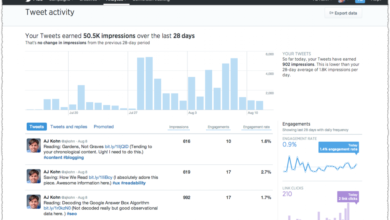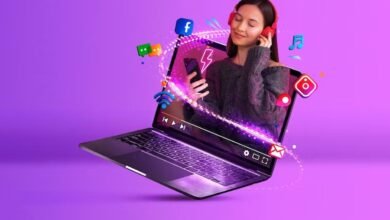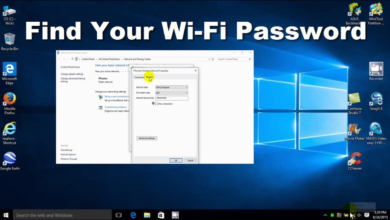Digital Minimalism: The New Trend in Smart Living
Digital minimalism is transforming smart living. Discover how intentional tech use boosts focus, reduces stress & enhances wellbeing.

Digital minimalism is revolutionizing how we interact with technology in an increasingly connected world. As smartphones, social media, and constant notifications dominate our daily lives, many people are feeling drained by digital overload. Digital minimalism offers a solution a philosophy that encourages intentional, purposeful use of technology while eliminating unnecessary distractions. Rather than rejecting digital tools altogether, this movement focuses on optimizing their role to enhance productivity, mental clarity, and real-world connections.
The rise of digital minimalism reflects a growing awareness of technology’s impact on well-being. Studies link excessive screen time to stress, anxiety, and reduced attention spans, prompting individuals to seek a healthier balance. By adopting mindful tech habits such as decluttering apps, setting boundaries, and prioritizing offline experiences people are reclaiming control over their digital lives. This is explores how digital minimalism fosters smarter, more fulfilling living in the modern age.
Digital Minimalism
Understanding Digital Minimalism
Digital minimalism is a philosophy that encourages individuals to use technology with greater purpose and selectivity. Coined by computer science professor Cal Newport in his book Digital Minimalism Choosing a Focused Life in a Noisy World, the concept revolves around the idea that less can be more when it comes to digital consumption. Unlike a complete digital detox, which involves temporary disconnection, digital minimalism promotes a sustainable, long-term approach to technology use.
Psychological and Social Benefits of Digital Minimalism
One of the most compelling reasons to embrace digital minimalism is its positive impact on mental health. Studies have shown that excessive screen time, particularly on social media, is linked to increased anxiety, depression, and feelings of inadequacy. By reducing exposure to mindless scrolling and comparison-driven content, individuals often experience improved self-esteem and emotional well-being. Additionally, digital minimalism fosters deeper, more meaningful relationships. Instead of superficial online interactions, minimalists prioritize face-to-face connections, leading to stronger bonds and greater emotional fulfillment.
Practical Steps to Adopt Digital Minimalism
Audit Your Digital Habits
Start by tracking your screen time for one week most smartphones now provide detailed usage reports. Identify which apps drain your time without adding value, and note moments when you reflexively reach for your device. This awareness highlights where to focus your minimalist efforts for maximum impact.
Ruthlessly Declutter Apps
Delete any app you haven’t used in 30 days, and be honest about “just in case” apps. For essential apps, disable notifications and badge icons to reduce visual triggers. Consolidate similar functions (like using one notes app instead of three) to simplify your digital ecosystem.
Implement the 30-Day Rule
Before downloading any new app, commit to a 30-day trial period. This cooling-off period prevents impulse downloads and helps determine if the app truly enhances your life. For social media, consider removing apps from your phone and accessing them only via desktop to reduce casual browsing.
Schedule Tech-Free Blocks
Designate sacred offline times perhaps mornings before work or evenings after dinner. Use physical barriers like leaving your phone in another room during these periods. Start with manageable 60-90 minute blocks, gradually increasing as you adjust to the mental quiet.
Cultivate Analog Alternatives
Replace digital habits with tangible experiences: carry a notebook instead of using phone memos, read physical books before bed instead of scrolling, or meet friends in person rather than defaulting to messaging. These substitutions satisfy the same needs without digital overload.
Optimize Essential Tech
For tools you must keep, apply minimalist principles: use grayscale mode to make screens less appealing, enable focus modes during work hours, and organize your home screen with only daily essentials. Treat your devices as specialized tools rather than all-purpose distractions.
Establish a Weekly Digital Reset
Dedicate 30 minutes weekly to review and prune: clear cached data, delete unnecessary photos/files, and unsubscribe from promotional emails. This maintenance prevents digital clutter from accumulating and reinforces mindful usage habits.
Embrace Single-Tasking
Challenge the myth of multitasking by dedicating full attention to one digital activity at a time. Close all other tabs when working, watch videos without simultaneous scrolling, and pause before switching between apps. This trains your brain to engage more deeply with technology.
Redefine Social Media Use
If keeping Social Media actively curate your feeds unfollow accounts that don’t inspire or inform you. Schedule specific times for checking updates (e.g., 20 minutes at noon) rather than constant checking. Consider making your profiles harder to access to reduce mindless logins.
Long-Term Impact of Digital Minimalism
Enhanced Cognitive Function & Focus
Over time, reduced digital clutter allows your brain to enter deeper states of concentration without constant notification interruptions. Studies show minimalists develop stronger attention spans and improved information retention. The mental space reclaimed from endless scrolling gets redirected toward meaningful learning and creativity.
Sustainable Mental Wellbeing
Chronic digital overstimulation keeps our nervous systems in constant fight-or-flight mode. Practitioners report sustained reductions in anxiety and decision fatigue after 6+ months of minimalism. The intentional approach to technology creates psychological safety by eliminating comparison traps and information overload.
More Authentic Relationships
As digital communication decreases, practitioners naturally invest more in face-to-face interactions. Over years, this leads to stronger social bonds and increased emotional intelligence. Minimalists often report their relationships become more substantive and less performative without the pressure of constant online presence.
Rediscovery of Temporal Wealth
The average person regains 3-4 hours daily by cutting mindless tech use. Long-term minimalists reinvest this time in skill development, health, and community engagement. This creates compounding benefits – better career opportunities, improved physical fitness, and deeper local connections.
Environmental Benefits
Reduced device upgrades and subscription services lead to significant savings over time. The minimalist approach also decreases e-waste and energy consumption. Many practitioners find their consumer habits shift toward quality over quantity in all life areas.
Development of Digital Sovereignty
After several years, minimalists develop an instinctive resistance to manipulative tech design. They become conscious curators rather than passive consumers of technology. This manifests in better privacy practices, reduced impulse purchases, and immunity to trending distractions.
Clarified Values
Without digital noise clouding judgment, core personal values become clearer over time. Many long-term practitioners report major life decisions – career changes, relocations, relationship choices – become more aligned with their authentic selves. The space created allows for regular self-reflection.
Improved Physical Health Markers
Reduced blue light exposure leads to better sleep quality within weeks, but the long-term effects include lower cortisol levels and improved eyesight. Many minimalists report fewer migraines, better posture, and increased physical activity as they replace screen time with movement.
Generational Mindset Shifts
For those raising children, digital minimalism creates households where technology serves rather than dominates. Kids develop healthier relationships with devices, learning to use them as tools rather than constant entertainment sources. This often breaks cyclical tech dependence patterns.
Read More: Meet Your New Doctor: The Rise of Virtual Health Assistants
Conclusion
Digital minimalism isn’t about rejecting technology it’s about reshaping our relationship with it to foster greater focus, well-being, and intentionality. By curating our digital habits and eliminating unnecessary distractions, we create space for what truly matters: meaningful connections, deep work, and personal fulfillment. As more people adopt this mindful approach, the benefits reduced stress, enhanced productivity, and a renewed appreciation for offline experiences become undeniable.
The journey toward digital minimalism is a personal one, requiring ongoing reflection and small, consistent changes. Whether it’s setting screen-time limits, unsubscribing from digital clutter, or reclaiming moments of quiet reflection, each step brings us closer to a more balanced and empowered life. In a world where technology often demands our constant attention, digital minimalism offers a refreshing alternative: the freedom to use tech as a tool, not a trap, and to live with greater purpose in both the digital and physical realms.
FAQs
What is digital minimalism?
Digital minimalism is a lifestyle approach that focuses on intentional and mindful technology use, eliminating unnecessary digital distractions to improve well-being and productivity.
How is digital minimalism different from a digital detox?
A digital detox is a short-term break from technology, while digital minimalism is a long-term strategy for mindful and selective tech use.
Can I still use social media as a digital minimalist?
Yes, but with intention focus on meaningful interactions rather than passive scrolling, and limit usage to avoid overconsumption.
What are the first steps to practicing digital minimalism?
Start by auditing your digital habits, deleting unused apps, setting screen-time limits, and prioritizing offline activities.
How does digital minimalism improve mental health?
By reducing exposure to excessive screen time and social media comparisons, it lowers stress, enhances focus, and promotes emotional well-being.











